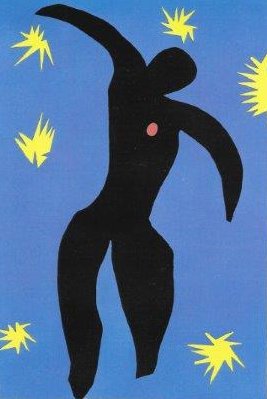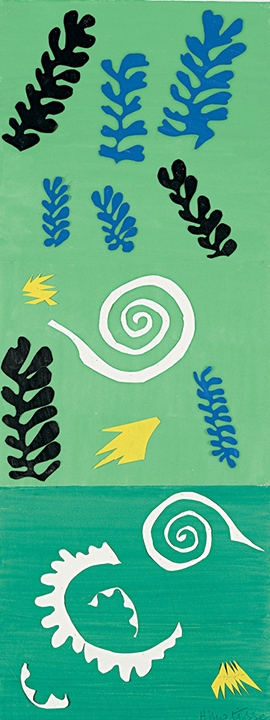 “One January morning in 1941, only a fortnight after his seventy-first birthday, the bearded and bespectacled French artist Henri Matisse was lying in a hospital bed, preparing to die.” *
“One January morning in 1941, only a fortnight after his seventy-first birthday, the bearded and bespectacled French artist Henri Matisse was lying in a hospital bed, preparing to die.” *Turning to cut paper as his new medium, and scissors as his chief implement, he introduced a radically new operation that came to be called a cut-out. He cut painted sheets into forms of varying shapes and sizes—from the vegetal to the abstract—which he then arranged into lively compositions, striking for their play with color and contrast. Here he crafted a brilliant final chapter in his long career.
The Cut-Outs became his renewed commitment to form and color and an inventiveness in the world of art. The ultimate turnaround story.
In our new world with its need for constant creativity, innovation and transformation, how do we reinvent ourselves to create an even better world for ourselves and for others?
It’s not as big as a risk as we think.
 Visit Henri Matisse: The Cut-Outs at MoMA in New York City until February 7, 2015. You will experience a truly delightful body of work from a man who by all accounts as a painter was finished because of his disability. Yet he “rose from the ashes” with an astounding art form that takes your breath away.
Visit Henri Matisse: The Cut-Outs at MoMA in New York City until February 7, 2015. You will experience a truly delightful body of work from a man who by all accounts as a painter was finished because of his disability. Yet he “rose from the ashes” with an astounding art form that takes your breath away.
It’s the largest and most extensive presentation of the cut-outs ever mounted, and it includes approximately 100 cut-outs—borrowed from public and private collections around the globe—along with a selection of related drawings, prints, illustrated books, stained glass, and textiles.
The last time New York audiences were treated to an in-depth look at the cut-outs was in 1961.
An artist friend of mine says this is a much better exhibit and that we will never see this ever again.
* from Alastair Sooke’s Henri Matisse: A Second Life

